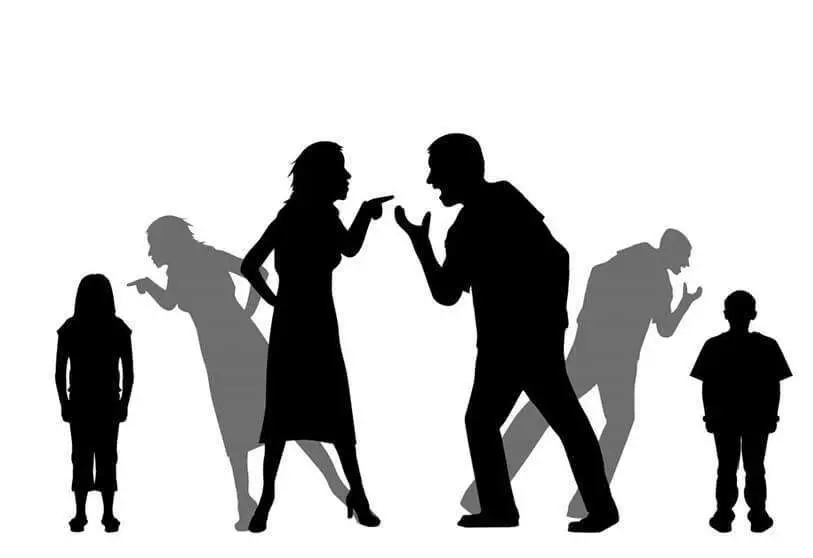Child to parent violence: visibility and risk factors

Child to parent violence has been a problem that has been repressed in the intimate sphere of the family for a long time. This article will show some of the causes of this repression, related risk factors and an explanatory theory, Bronfenbrenner's ecological theory, applied to child to parent violence.
For a long time, patriarchal culture normalised male violence within the home, as it was understood as a corrective method in the domestic sphere. However, in the 1960s, child abuse began to become visible, and in the 1970s, abuse against women. As a result of this, domestic violence has come to be considered a social and political problem, no longer a problem repressed in the intimate sphere of the family.

Specifically, in the case of filioparental violence, this was understood as isolated and out of the ordinary, and for many years it has been a neglected phenomenon. This violence was and is often hidden by parents because they are ashamed to recognise themselves as victims of their own children, for fear of being judged as guilty or because they feel they have failed as parents.
According to Cottrel (2001), child to parent violence is "any act by children that provokes fear in parents in order to gain power or control and is intended to cause physical, psychological or financial harm to parents". It is important to note that the materialisation of the harm is not required; it is sufficient to generate fear in the victim.

On the other hand, in 2014, the Spanish Society for the Study of Child to Parent Violence (SEIVIFIP) established the following definition: "Repeated behaviours of physical, psychological (verbal or non-verbal) or economic violence, directed at the parents or those adults who take their place".
With these definitions, therefore, the following elements are stipulated: violent behaviour repeated over time, intention to cause harm and directed at the parents or those who take their place. This last element, which is incorporated with the SEIVIFIP definition, provides a broader view of the facts, adapting to different family circumstances, as it includes both parents and other persons who carry out the tasks of education, care and protection of the aggressor children. However, it would be more accurate to coin the term "bottom-up violence" in this case.
Bronfenbrenner's ecological theory was developed in 1987. This theory considers that human beings develop within certain environmental structures that are at different levels, where each level contains the other. We find the following levels:
- Microsystem: this is the most intimate level, which includes family, friends, etc. It can act as an affective and positive context or, on the contrary, as a destructive environment.
- Mesosystem: is the interaction of two or more environments in which the person usually develops and in which he/she actively participates, such as school, cinema, parks, etc.
- Exosystem: is a wider context in which the person does not actively participate, e.g. media, laws, etc.
- Macrosystem: this is made up of beliefs, traditions, etc., i.e. the culture and subculture in which the person develops and which affect him/her.
Since violence is an interpersonal process because it involves at least two individuals, it is appropriate to apply ecological theory in order to understand it. In this way, we can obtain different risk factors that emerge from each of the levels.

Thus, we can relate some of the following risk factors for child to parent violence to the levels outlined in the above-mentioned model:
- Starting with the most general ones, we would have the socio-cultural factors, related to the macrosystem, which is given by culture, traditions or changes in these, and with the exosystem, such as the change of laws:
- Parenting styles or models of education: traditionally it has been related to the authoritarian style, as it developed the bidirectionality of violence within the family. Children learn that violence is the way to relate to the family and by adolescence children begin to treat their parents violently. However, in recent times the permissive model has also led to major problems, as children lacked limits, rules or supervision, resulting in a tyrannical relationship with parents.
- Change in traditional family models: the traditional family consisted of a heterosexual couple with children, where roles were well defined. However, over the years this has changed, new family models have emerged and, in addition, there have been some changes that have affected all families, such as the incorporation of women into the labour market (change of laws), the decrease in the number of descendants and the incorporation of new technologies used by minors, often in an uncontrolled manner. The use of new technologies has increased bullying situations, generating cyberbullying and, apparently, these children who suffer harassment can go on to exercise filioparental violence as a form of revenge in the face of this situation of inferiority.
- Other factors include the influence of the consumer society in which every child seems to have to have everything to be happy, the increased and easy access to pornography, alcohol and psychoactive substances, and the fact of living in a competitive and individualistic society that makes children selfish towards others.
- Family factors would be at the most intimate level, therefore, they could be derived from the microsystem:
- Firstly, derived from the authoritarian parenting styles experienced by parents, permissive models have arisen, which as already mentioned, have not improved these situations, but remain a risk factor, as children continue to act as they want, deriving this in tyranny on the part of the children.
- Absence of hierarchical structures, as parents do not set the necessary limits, therefore, children have an autonomy that is not appropriate for their age.
- Change in roles, in this case, through a learning process, children understand that by scaring parents they get what they want, so they get positive reinforcement and continue to behave in this way. Thus, the parents become the victims and the children are the ones in power.
- The socio-demographic factors are the most personal and so we cannot relate them to any of the levels:
- Gender: although violence has usually been related to the male sex, no significant differences have actually been found.
- Age: it is usually between 11 and 18 years old, the average being around 14 or 15 years old.
- Clinical disorders and substance use: these circumstances have not been related to child to parent violence, as it is considered to be due to external factors and therefore would not be considered as such.
- Personality characteristics and traits: egocentrism and narcissism, intolerance to frustration, lack of empathy, irresponsibility, hedonism and impulsivity.
In 2004, Cottrell and Monk established some explanatory factors for child to parent violence from an ecological perspective, many of them coinciding with the risk factors discussed above:
- Maintenance of family privacy: parental denial of the problem, paternal self-blame and parental loyalty to the child.
- Lack of information and community supports: unclear parental rights and lack of family support.
- Impact of victimisation on adolescents: witnessing abuse towards the mother or being a victim of abuse.
- Parenting styles and family dynamics: controlling, permissive or conflictual parenting style.
- Poverty and related stress factors: parental role overload and legal resources for the child.
Raising awareness and making this problem visible has been a great step forward, as it has helped to bring new cases to light, preventing them from remaining only in the intimate sphere. Proof of this has been the retransmission of some television programmes such as 'Big Brother' or 'Supernanny', as they have shown us realities that surely part of the population was unaware of or considered impossible to happen. Obviously, we must bear in mind that it is still a programme for the audience, and that not everything that is shown will ever be totally real, but it does help to make the problem visible.

As has already been mentioned, there are many factors involved, among which it is important to highlight the educational models, changes in roles and exposure to violence, whether it is gender-based violence or domestic violence.
Ángela Martín García, psychologist specialising in the analysis of criminal behaviour and collaborator in the Criminology area of Sec2Crime
Bibliograpfy
Acero, J. L. S., Arias, R. M., & Alba, A. F. (2020). Análisis epidemiológico y factores de riesgo en violencia filio-parental desde una perspectiva de género. Psicopatología Clínica Legal y Forense, 20(1), 89-113.
Claver, E. (2017). Aproximación teórica a la violencia filioparental. Redes: revista de psicoterapia relacional e intervenciones sociales, (35), 21-31.
Gámez Guadix, M., & Calvete, E. (2012). Violencia filioparental y su asociación con la exposición a la violencia marital y la agresión de padres a hijos. Psicothema.
Ivernón, M. B. R. (2017). Aproximación al fenómeno de la violencia filioparental. Documentos de trabajo social: Revista de trabajo y acción social, (59), 85-116.
Peligero-Molina, A. (2016). La violencia filio-parental en el contexto de la violencia familiar
